Unless you're a much luckier angler than I am, your trips to the stream won't always be graced by plentiful hatches and rising trout which reveal themselves to you through their intermittent visits to the surface. Trout spend ninety percent of their time feeding below the surface where food sources are plentiful and feeding is less risky and energy consuming. This leaves the angler with one task of primary importance: finding fish. Sometimes, trout feeding below the surface can be spotted from above. But, even the keenest of eyes will fail to detect most trout feeding subsurface. After all, the stream and the trout conspire to keep your quarry hidden. Trout seek out the places that provide them with what they need while keeping them hidden from predators like otters, birds and fishermen.
Recently, I found myself on a tumbling mountain stream that I used to fish with regularity, but have not returned to in some time. Over the last few years, the northeast has been hit by a number of major storms. Streams and rivers have been repeatedly blown out by high water flows, stream beds scoured and scraped by storm surge, leaving many reshaped and reformed, sometimes bearing little resemblance to their former selves. Some pools looked virtually unchanged, save for minor changes like longer tailouts or slightly reformed shelves and drop-offs within the pools. But much of the stream was virtually unrecognizable, its new shape and form offering up not even the ability to reconstruct or imagine its creation by storm waters of the last few years.
The result was a stream that I couldn't approach in the way I had for years, hopping from pool to pool or run to run, unthinkingly plying the same spots I'd always plied -- knowing that fish almost certainly lie waiting beneath.
To further complicate matters, thanks to a week of heavy spring rains, the stream was running high. As high, in fact, as several others who had fished it for decades could remember seeing it. The relatively raging flows and high water served to transform even those parts of the stream which had remained relatively structurally unchanged, no doubt displacing trout from their normal holding positions. And, after one of the hardest eastern winters on record, cliff sides and stream banks in many locations on the stream still had ice clinging to them in areas where it typically vanishes at least a month earlier. Even where the strong sun peeked through the forest canopy to warm the icy flows, water temperatures struggled to hit 40 degrees. Trout that would normally be voraciously feeding after a long, food-scarce mountain freestone winter were lethargic and reluctant to feed.
Much to my surprise, the day turned out not only be one of my more productive days on this old but no-longer familiar stream, but by far my most enjoyable. Instead of laboring over my fly choices or how to fish them, I focused intently on where to find fish. I tossed flies into newly-formed, foam-covered back eddies, presuming fish to be lurking in the depths below. I drifted nymphs along storm-scoured cut banks or marinated them in cyclonic reverse currents that formed alongside the throat of many pools thanks to the unusually high, rushing waters tumbling over rocks and boulders above. I stripped woolly buggers through the soft water -- created by flow-blocking boulders, rock walls or deadfall --- on the insides of current tongues.
All of that is little more than using, possibly inappropriately, fancy jargon about stream and trout pool morphology to say I spent the day leveraging what I know about reading water to identify and explore parts of the stream where I thought trout were likely to be holding. I made the best guesses I could, taking into account the structure of each run, riffle and pool, the unusually high water and the unseasonably cold water temperatures.
Each discovery of holding trout was its own reward. Each served as validation that the great deal of time I've spent time reading about trout lies -- holding, feeding and prime -- and what makes them so, endeavoring to understand the particulars of the streams that create them, was time well spent. The particulars of the fish that came to hand -- beautiful native brook and wild brown trout -- were secondary.
With thought first and foremost tuned to the where, rather than the how, I found myself intently fishing parts of the stream that -- though I might suspect trout to hold there -- I would commonly pass over, opting instead to fish familiar current seams, laboring over what flies to tie on, how drag-free my drift was, or whatever other tactic I might employ to improve my odds. When the results didn't come, you'd more likely find me hopping from one section of stream to another rather than systematically picking apart each one.
I left the stream wondering how many days I had spent disproportionately focused on the how rather than the where. After all, you can't catch fish that aren't there, regardless of how perfect your pattern choice is. And, I've always been an advocate of the idea that a well-presented do-it-all pattern like a pheasant tail, parachute adams or hare's ear is more likely to catch fish than a more specifically targeted pattern poorly presented or -- even worse -- presented to an area of the stream that holds few or no fish.
My hope is that my recent experience will stick with me. That I'll continue to dissect and explore the stream in front of me, deriving as much joy from uncovering hidden trout as I did the other day. Not only will the fishing be more rewarding, I'll be a better fisherman for it.




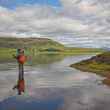


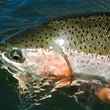



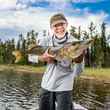




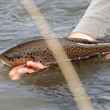
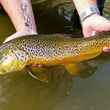



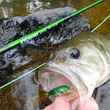
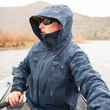






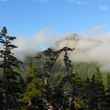
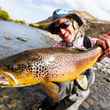
Comments
Tom Panek replied on Permalink
I like your approach on several different levels. I live in the Southeast, where most streams are either put-and-take, delayed harvest or catch-and-release only managed waters. The reason for this is mostly poor forage (lack of aquatic insects) coupled with seasonably warm summer water temperatures. For this reason, I have transitioned from a dry fly match-the hatch fisherman to being a forage fisherman. I catch the majority of my fish on weighted streamers, wet flies and nymphs, and a scattering of terrestrials late in the season. Underwater is better in most instances.
I also find I often do better on new water, similar to what you're talking about. It seems as though I fish more intensely and thoroughly when I'm not in the "same old story" syndrome. When I fish under the surface, new water almost requires a harder search for fish. I often do well on a "virgin" stream in comparison to subsequent visits, or streams I usually fish. When I know the good spots I tend to concentrate on them and overlook a multitude of other possibilities.
So I've learned two major ways to improve on my success. I now fish most of the time with a 9' five-weight because it gives me the versatility and ability to throw everything from weighted streamers to jassids. The longer rod works great on nymphes and wet flies, too. And I think fishing below produces more big fish. The extra backbone in a five-weight comes in handy.
The other lesson is that I do my best to approach the streams I regularly fish as if they are new water. Every stream experiences subtle changes even after a hard thunderstorm. We often walk right by a new depression in the streambed or a boulder or blowdown that now holds fish. In our hurry to get to the "spot," we miss fishing opportunities.
Thanks for the insightful article.
Chad Shmukler replied on Permalink
Thanks Tom. Glad we see eye to eye.
I think one of the most important things is how rewarding this sort of predatory approach to a stream can be (or as you put it, "forage" approach). I think it adds new dimensions to the puzzle we're all already searching for, and increases the reward when we solve it.
I put down a few more thoughts along these same lines here, in Thoughtfulness: a fly fisher's most important trait.
Pages